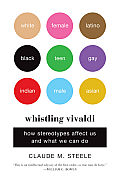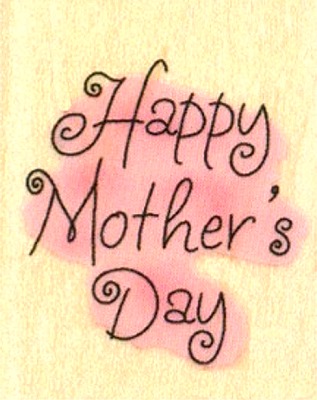It’s been  a long while since a book kept me up at night — both because I compulsively had to finish reading it, and also because it invaded my dreams. Home/Birth, recently published by 1913 Press did both.
a long while since a book kept me up at night — both because I compulsively had to finish reading it, and also because it invaded my dreams. Home/Birth, recently published by 1913 Press did both.
Co-written by two poets I much admire, Rachel Zucker and Arielle Greenberg, the book’s subtitle, A Poemic offers a first cue to the passion and conviction the authors infuse into this original, collage-like work. Interweaving their personal narratives about their home (and initial hospital) birth experiences, they also include the voices of home birth providers (midwives, doulas, supporters), as well as layer in statistics about the safety of home birth and the dangers of the hospital experience — both physical and emotional. Quoting largely from Jennifer Block’s book Pushed, there is no attempt to portray a spectrum of opinions about birthing. Their position is focused, their zeal is clear — staying at home is the best option for a woman to have an experience that is empowering to her, causes her to trust in her body, and to holistically bring her child into the world.
For Zucker, a trained doula, and Greenberg, (soon to leave her tenure-track job for a move to Maine and a possible transition to birth education work) clearly, this is a topic around which they feel a deep sense of mission, both in terms of changing the received notions about the safety of home birth, as well as doing political advocacy to overturn restrictions which have limited the scope of midwifery and “normalized” medical intervention. Greenberg is explicit about how her first home birth (in Illinois) was actually illegal and the limitations this placed upon her care, as well as the demands caused by her sudden second home birth — fleeing the state to temporarily move to Maine so she could be attended legally by a midwife practice.
The medicalization of what is a natural process, (once left entirely in the hands of women, both literally and spiritually) has long been a topic of hot debate, as Block outlines here. Recent movements have (controversially) named “birth rape” as a phenomenon some women experience after acts of obstetric violence have been inflicted upon their bodies during childbirth. Suffering PTSD after birth has also more recently been acknowledged as an aftereffect of a traumatic birth experience. Then there’s the recent news about how Disney has been barging into the delivery room, another way in which birth has been co-opted for corporate gain.
It’s impossible to not be moved by the testimonies offered in the book — women robbed of a sense of their body’s power, nevermind a profound moment with a new child. Yet, I am certain many will approach this book with deeply entrenched resistance and even feel enraged by the staunchness of the authors’ position. A refrain the two insert throughout the text is “What if something goes wrong?” no doubt a line each has been asked continuously. I found myself wanting to hear this more directly answered, rather than just offered as a rhetorical question. The stories relayed about home birth don’t all end happily, and the book concludes on a deeply poignant note that offers through example an answer to this question — yes, things can go wrong, but “holding the space” for a woman to meet her child within a sense of connected power is still worthwhile.
It is most difficult to critique Home/Birth as a poem. Collaborative writing doesn’t have a strong tradition within the U.S. and there were moments I wished for more clarity and shape around the narrative(s). Attention to the line is found most strongly in the interstices between chapters — where the two take phrases previously included and collage them into more precise lines, as in this excerpt:
Never thought this would —
dreamed of —
be my story.
Every child. Changes. You
feel sane, like a witch with her silky moonlight or goddess.
Feel grateful like a feminist, like an activist, like a friend and
the truth is when you saw what you could do —
women watching over —
it changed everything and was safer and feminist
all the drawers and doors and windows
at once and the low noise we make
opening, opening.
I almost longed for Zucker and Greenberg to write a nonfiction book about their experiences rather than knitting the threads of so many others voices together. Their use of the word “witch” is intriguing, but unclear — is this a straightforward reclamation or modern reconstitution of the word? Likewise, this is clearly a political topic for both, one that affects a range of women’s health issues, yet I wished their desire to tie this to the feminist movement had been more explicit. They intersperse T-shirt and bumper sticker slogans about home birth throughout to show both the popular embrace of this movement and counter attitudes to its resistance. While the phrases are clever and sound lighthearted, (“Childbirth is a natural procedure, not a medical event” “Yes, I gave birth at home. Now ask your silly questions” and “Peace on earth begins with birth”) they reveal the flame this movement ignites (the countervailing, “Home deliveries are for pizza”). They serve as poetic tropes of sorts, but I would have liked more rendering of these messages in the poets’ own voices.
Greenberg and Zucker offer a unique pastiche, a chorus of female voices, sometimes speaking simultaneously, sometimes in fugue, as they layer facts, scraps, nuances, and feelings about this topic. The result is profoundly affecting, and their invention of word “poemic” is the right refraction of polemic, serving as an invented form that allows them to bring their poetic talents to bear about this deeply felt topic. The book’s opening epigraph by Muriel Rukeyser, “Pay attention to what they tell you to forget,” can also serve as its parting invocation as both authors advocate for remembering what has always been known.



 Normally I would wait to read the actual book before writing a glowing post about it, but last week I was privileged to sit front row as
Normally I would wait to read the actual book before writing a glowing post about it, but last week I was privileged to sit front row as  Just in time for Mother’s Day, Save the Children has published its twelfth annual
Just in time for Mother’s Day, Save the Children has published its twelfth annual  Guest poster and
Guest poster and 

